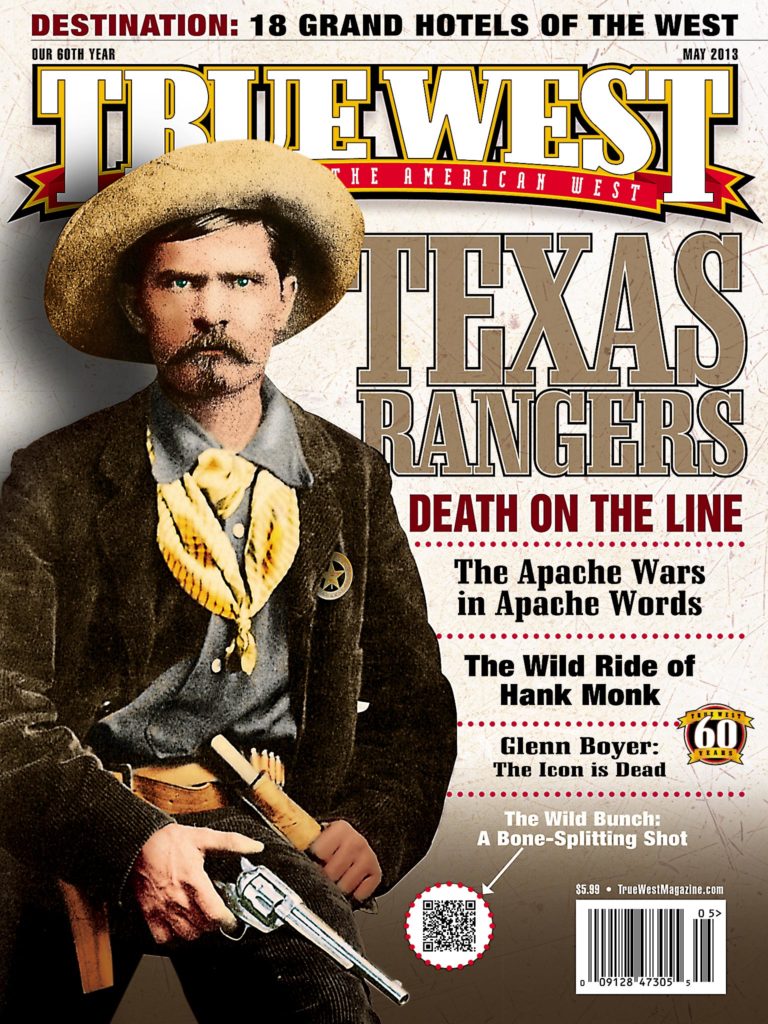 We are coming up on the 500-year mark since the glory days of the Spanish conquistadors. It was in 1519 that Hernando Cortés mounted his campaign to topple the Aztec empire, a move that would bestow upon him the title of “Conqueror of Mexico.” In the aftermath of Cortés were numerous conquistadors (conquerors) and, accordingly, numerous entradas (forays) into the northern frontiers of New Spain.
We are coming up on the 500-year mark since the glory days of the Spanish conquistadors. It was in 1519 that Hernando Cortés mounted his campaign to topple the Aztec empire, a move that would bestow upon him the title of “Conqueror of Mexico.” In the aftermath of Cortés were numerous conquistadors (conquerors) and, accordingly, numerous entradas (forays) into the northern frontiers of New Spain.
But for devotees of the history of the American West, one name stands apart—Francisco Vázquez de Coronado—and only one other name approaches that name in importance—Juan de Oñate. The latter’s entrada came six decades after Coronado’s, but covered much of the same ground.
Today, their explorations seem steeped in the mists of time. Yet we know that in 1541, an astoundingly short 49 years after Christopher Columbus’s discovery of the New World, Spaniards plunged deep into the Great Plains, claiming for Spain the midsection of what is now America, encountering human beings who themselves had never seen a human being atop an animal—an animal, in fact, that they’d never seen before.
Author Stan Hoig, in the last work he would ever pen, published posthumously, brought remarkable insight and conciseness to the telling of the Spaniards’ tales. His Came Men on Horses: The Conquistador Expeditions of Francisco Vázquez de Coronado and Don Juan de Oñate comes out three years after his passing at age 85. Hoig, a respected and prolific author of Western history, also authored The Battle of the Washita, The Chouteaus, The Sand Creek Massacre, Tribal Wars of the Southern Plains and The Humor of the American Cowboy, his first book. Altogether, he wrote some 25 books while serving as professor of journalism at the University of Central Oklahoma. Before the end of his 22 years there, he attained the status of professor emeritus.
Though his area of academic expertise was journalism, Hoig deemed himself a “journalist historian.” In that respect, he was known for sharing his interest in historical research and the American West with his students, says Dr. Pamela T. Washington, a former dean of the University of Central Oklahoma’s College of Liberal Arts. As Dr. Washington observed three years ago, “[Hoig] always compared historical writing to a kind of archaeological dig where you reveal more and more layers of information the further you dig.”
In his last effort, he dug deep. As Durwood Ball, an associate professor of history at the University of New Mexico, remarked, “After examining Hoig’s account, I will never see the Spanish entrada or conquest in the same way…. Parts of this manuscript left me stunned.”
Following in the tradition of Richard and Shirley Cushing Flint, Hoig toppled some long-standing assumptions and demythologized some of the myths. Earlier historians have treated Coronado and Oñate as markedly less oppressive than their predecessors. Hoig debunked those sanitized images in short order.
Yes, their predecessors were cruel. In the 1530s, Nuño de Guzmán led a force that penetrated northward along the western portion of New Spain as far as San Miguel. Called by his later contemporaries the “most foul and evil man” to ever set foot in New Spain, Guzmán “set a standard for human cruelty by branding Indian natives on the face with heated irons and selling them as slaves to mine operators in the West Indies,” Hoig wrote in his book.
But 70 years later, Oñate was allegedly guilty of “cutting off noses, hands, or feet” to strike fear and establish dominance. Coronado had been equally brutal, burning natives at the stake.
Between tales of such atrocities come interludes of sheer wonder. García López de Cárdenas, one of Coronado’s lieutenants, went in search of water and discovered the Grand Canyon. Coronado, venturing east, found Apaches, a sea of grass and buffalo.
“Moving eastward from the Pecos River, expedition members began to see large numbers of buffalo,” Hoig wrote. He quoted Coronado himself: “…to count them is impossible. [I say this] because never for a single day did I lose sight of them as I traveled through the plains, until I returned to where I [first] found them.”
Pedro de Castañeda, who was with Coronado, described a hunt when a herd stampeded into a ravine: “so many of the animals fell in that they filled it level and the rest crossed over the top [of them].”
Such images defy imagination. The same applies to Oñate’s 1598 discovery of the Wichita Indians on the Arkansas River in present-day Kansas. His explorers found 1,200 “dome-roofed thatched huts.” Going another five miles up the river, they “counted more than 1,700” additional huts, and “saw many more in the distance.”
Obviously, no one of Hoig’s stature comes to the conquistador accounts without something new to say. His analysis of past historical discrepancies due to shifts of the Julian and Gregorian calendars, his knowledge of geology and rivers, his keen analysis of motives and especially his research into primary and secondary sources bring fresh insights and mark Came Men on Horses as an essential analysis of this fascinating and neglected epoch. —Jesse Mullins






